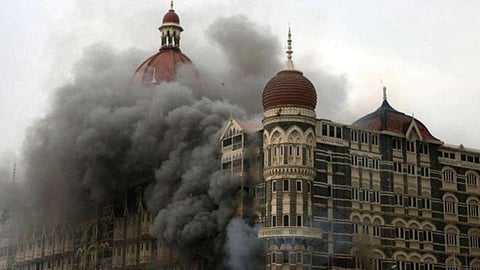

MUMBAI: The 26/11 terror attacks of 2008 perpetrated by the Lashkar-e-Taiba (LeT) in Mumbai is a painful memory that India has found hard to make peace with.
The 12 coordinated attacks that lasted four days claimed the lives of 175 people, including nine attackers, while leaving over 300 wounded. The attacks, one of the most dastardly of its kind on Indian soil, was a reminder of how vulnerable India was, with regard to the possibility of a terror strike, facilitated by non-State actors operating out of Pakistan.
Although Islamabad had initially denied its citizens had anything to do with the attack, it was eventually compelled to own up to the identities of the terrorists who had been trained alongside former officers of the Pakistan Army and the Inter-Services Intelligence agency, as per reports from US intelligence agencies.
Terrorists affiliated to groups based out of Pakistan have carried out cowardly attacks against civilians in India, time after time, with the crosshairs frequently turned on the nation’s financial capital — from the 1993 bomb blasts that killed 257 people to the July 2011 blasts which claimed 26 lives.
Even before India could steady itself from the impact of 26/11, the spectre of cross-border terror reared its head again; with the nation’s army being targetted this time.
In 2016, four Jaish-e-Mohammed terrorists struck at the Indian Army brigade headquarters at Uri in Jammu and Kashmir. It led to the death of 19 Indian soldiers and was referred to as the deadliest attack on security forces in Kashmir in over two decades.
India responded by carrying out a surgical strike 11 days later, hitting out at terror targets, safehouses and launchpads over the LoC, which killed over 150 Pak-sponsored terrorists.
But India’s responses have not really broken the spine of State-sponsored terrorism routed through Pakistan. In 2019, a vehicle-borne suicide bomber hailing from the JeM carried out a deadly attack on a convoy of CRPF soldiers in Pulwama, leading to the death of 40 personnel. The strike had an adverse impact on Indo-Pak relations and caused a military standoff, leading them to share a cold rapport for a while now.
India is faced with aggression from Pakistan’s closest ally China with whom tensions had peaked following the Galwan clash. In September, China exploited its status as a permanent member of the UN Security Council to hold back against the listing of LeT terrorist Sajid Mir, who is on Delhi’s most-wanted list on account of his role in the 26/11 terror attacks.
Beijing had previously prevented the listing of dreaded US-designated terrorists affiliated to LeT, as well as JeM chief Masood Azhar for about 10 years, until it relented in 2019.
Today, India is dealing with terror of a new kind, as seen by the blasts in Coimbatore and Mangaluru.
Homegrown extremist outfits affiliated to global terror groups like ISIS have embarked on radicalisation drives across India. Law enforcement agencies have a tall order ahead of them tackling enemies, both inland, and beyond our borders.
We will need to make significant investments in beefing up our military infrastructure, in terms of equipment and personnel, and give teeth to our intelligence agencies. The infusion of fresh blood into the military via the Agnipath scheme seems to be a step towards it.
Individually, States will also require to make adequate allocations towards smart policing through digitisation as well as liaison with inter-State agencies to build efficiencies in combating terror in all its forms.
Visit news.dtnext.in to explore our interactive epaper!
Download the DT Next app for more exciting features!
Click here for iOS
Click here for Android